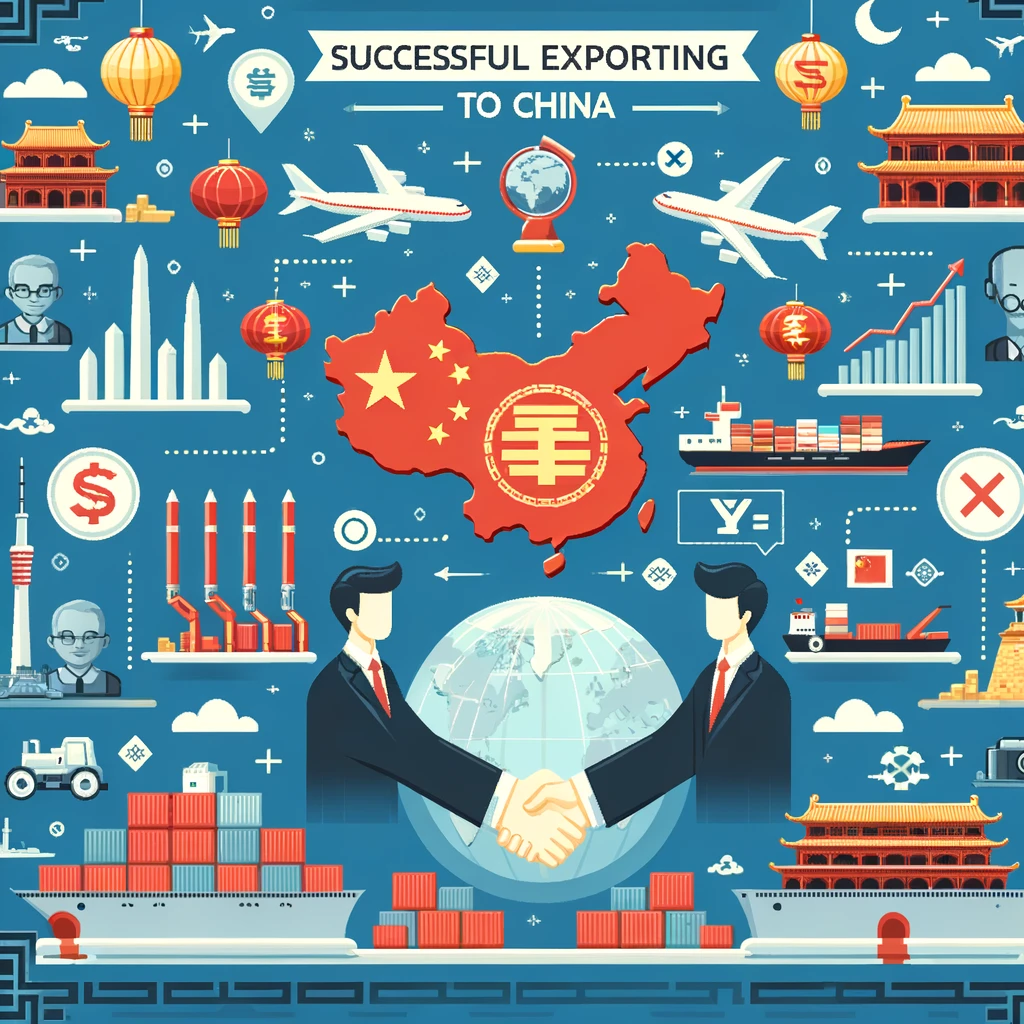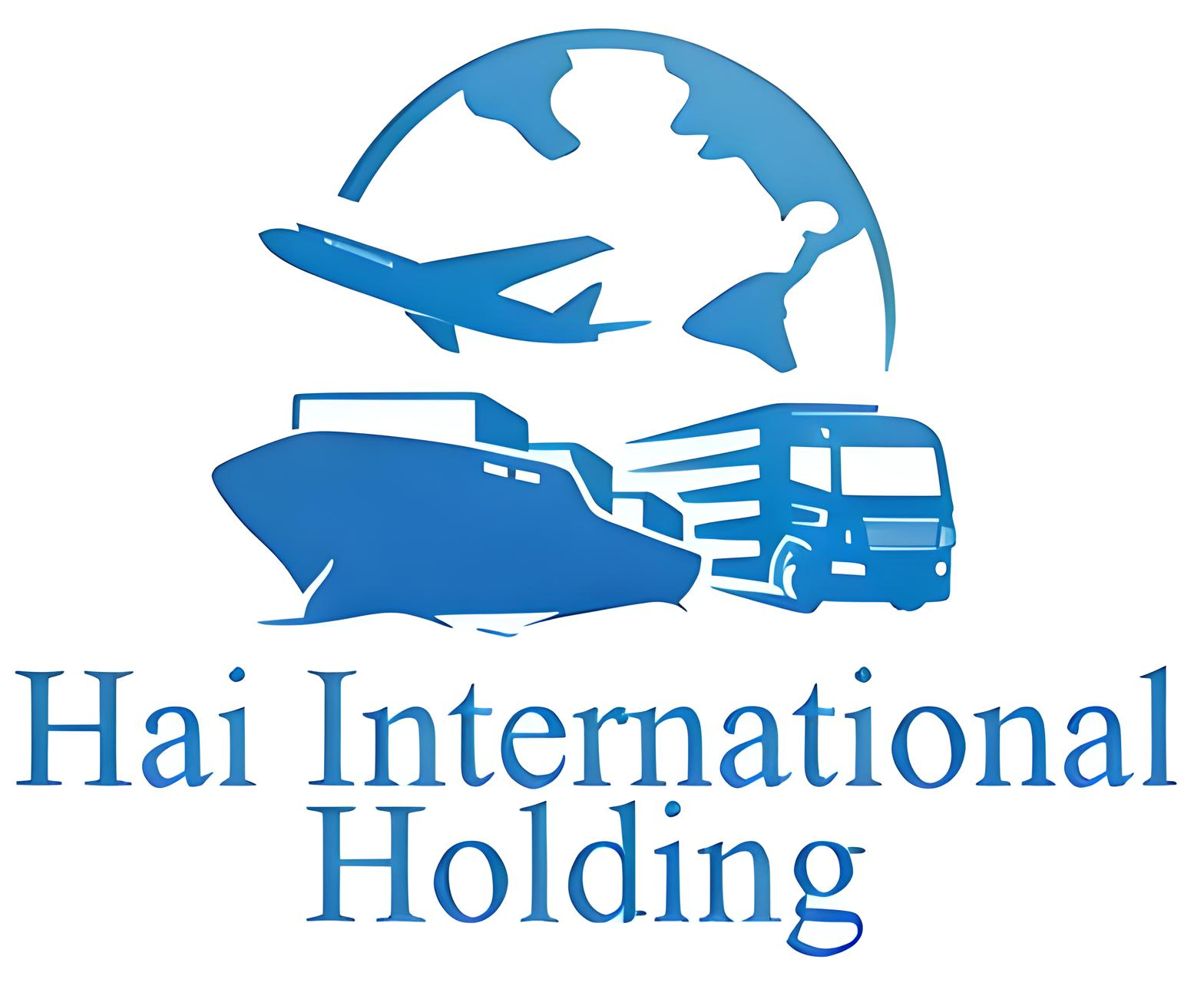Why export to China? It’s not just the market size; it’s the incredible growth and opportunities. China’s middle class is expanding rapidly, creating a huge demand for international goods and a massive opportunity for businesses.
In 2023, China’s GDP grew by 6.3%. With over 1.4 billion consumers, the potential is enormous, especially in sectors like technology, luxury goods, and consumer electronics.
This article provides the top 5 tips for successful exporting to China. Whether you’re a small business or a large corporation, these tips will help you navigate the Chinese market and achieve export success. Let’s dive in!
Tip 1: Understand the Chinese Market
Research Market Demand and Consumer Behavior

Before entering the Chinese market, it’s crucial to research market demand and consumer behavior. Chinese consumers have distinct preferences, favoring brand reputation and high-quality products. According to a Nielsen survey, 74% of Chinese consumers prefer imported brands due to their perceived superior quality. Understanding these preferences helps tailor your products to meet local expectations. For instance, Chinese consumers often prioritize health and safety standards, making it essential for exporters to highlight these attributes in their offerings.
Identify Key Industries and Sectors with High Potential
Focus on key industries with significant growth potential. The technology sector in China, for example, is projected to reach $5 trillion by 2025. This includes areas like artificial intelligence, consumer electronics, and e-commerce. Additionally, the luxury goods market is thriving, with China expected to account for 50% of global luxury sales by 2025. The growing middle class and increased disposable income are also boosting the consumer electronics sector, making it a lucrative target for exporters.
Analyze Competitors and Local Market Conditions
Success in China requires thorough competitor analysis and an understanding of local market conditions. Study how companies similar to yours are performing and identify what strategies they use. For example, Tesla gained a foothold in China by establishing a local manufacturing plant in Shanghai, which reduced costs and appealed to local consumers by offering more affordable prices. This strategic move allowed Tesla to become the top-selling electric vehicle brand in China. Understanding local regulatory environments, distribution networks, and consumer preferences will also give you a competitive edge.
Case Studies/Examples of Successful Market Entry
Learning from successful market entries can provide valuable insights and inspiration. Nike is a prime example; the company achieved success in China by tailoring its marketing campaigns to resonate with Chinese cultural themes and emphasizing its premium image. Nike’s “House of Innovation” flagship stores in Shanghai and Beijing are designed to offer personalized shopping experiences, blending physical and digital retail. Another successful case is KFC, which adapted its menu to include local flavors such as congee, Peking duck wraps, and spicy chicken, leading to rapid expansion and popularity in China. These examples highlight the importance of localization and cultural adaptation. By learning from these successes, you can develop strategies that resonate with Chinese consumers and navigate the market effectively.
Tip 2: Compliance with Regulations and Standards
Overview of Chinese Import Regulations and Standards
Navigating Chinese import regulations and standards is crucial for successful exporting. China enforces strict quality control and safety standards that vary by industry. For instance, the China Compulsory Certificate (CCC) is mandatory for many products, ensuring they meet national safety standards. In 2021, non-compliance with these regulations resulted in the rejection of 5% of imported goods, leading to significant financial losses for exporters. Additionally, specific industries, such as food and beverages, require stringent adherence to hygiene and safety protocols, overseen by the General Administration of Customs China (GACC).
Steps to Ensure Compliance with Chinese Trade Laws
To ensure compliance with Chinese trade laws, start by thoroughly researching relevant regulations for your products. This involves:
- Obtaining necessary certifications like the CCC, which is required for products ranging from electrical appliances to automotive parts.
- Registering trademarks to protect your brand and avoid counterfeit issues.
- Ensuring product labeling meets Chinese standards, including translations and specific information requirements such as origin, ingredients, and usage instructions.
Collaborating with a local compliance expert or consultant can streamline this process. For example, companies that engage local consultants reduce compliance issues by 30%. Maintaining accurate and up-to-date documentation is essential to pass customs inspections smoothly. Utilizing digital tools and platforms for document management can help keep track of all necessary paperwork and updates in regulations.
Importance of Intellectual Property Protection
Protecting your intellectual property (IP) is vital in China, where IP theft can be a significant risk. Register your trademarks and patents early to secure your rights. The China National Intellectual Property Administration (CNIPA) oversees IP registrations, and filing directly in China provides stronger protection. Regularly monitoring the market for potential infringements and taking swift legal action when necessary can safeguard your IP. In 2022, foreign companies filed over 60,000 IP infringement cases in China, highlighting the need for proactive IP management. Utilizing services like the China Trademark Office and hiring local IP attorneys can provide additional layers of security and guidance.
Resources for Staying Updated on Regulatory Changes
Staying informed about regulatory changes is crucial for ongoing compliance. Utilize resources like the China Council for the Promotion of International Trade (CCPIT), which provides updates on trade regulations. Subscribing to industry newsletters, attending trade shows, and participating in webinars hosted by trade organizations can also keep you informed. In 2023, companies that regularly used these resources reported a 20% reduction in compliance issues. Additionally, platforms like the Global Compliance News and China Briefing offer comprehensive updates and analyses on regulatory changes that can affect your business.
Common Compliance Challenges and How to Overcome Them
Common compliance challenges include navigating complex regulations, dealing with frequent regulatory changes, and managing language barriers. To overcome these, establish a relationship with a reliable local partner or consultant who understands the regulatory landscape. Investing in staff training on compliance issues and leveraging technology solutions for regulatory tracking can help. For instance, companies using compliance management software saw a 25% improvement in regulatory adherence.
Practical Tips to Address Challenges:
- Hire Local Experts: Engage local legal and compliance experts who understand the nuances of Chinese regulations.
- Use Technology: Implement compliance management software to track regulatory changes and maintain documentation.
- Staff Training: Regularly train your team on compliance requirements and updates.
- Build Relationships: Establish strong relationships with local authorities and industry bodies to stay informed and gain support.
By addressing these challenges proactively, you can ensure smoother operations and reduce the risk of non-compliance, ultimately facilitating a more successful market entry into China.
Tip 3: Building Strong Relationships with Local Partners
Importance of Guanxi (Relationships) in Chinese Business Culture
In Chinese business culture, guanxi (relationships) is essential. This concept revolves around building strong personal networks and mutual trust. Guanxi significantly influences business success, as decisions are often based on relationships rather than formal contracts. According to the Journal of Business Research, companies with robust guanxi networks experienced 30% faster problem resolution and better negotiation outcomes. Developing guanxi involves time, effort, and consistent personal interaction. For instance, attending dinners, participating in social events, and maintaining regular communication are key practices to strengthen guanxi.
Tips for Finding and Vetting Reliable Chinese Distributors and Partners
Finding reliable Chinese distributors and partners is crucial for successful market entry. Start by networking at industry events and trade shows in China, such as the Canton Fair and China International Import Expo. These venues are excellent for meeting potential partners. Use platforms like Alibaba and Global Sources to identify prospects. To vet potential partners:
- Verify their business licenses and certifications through official channels like the National Enterprise Credit Information Publicity System.
- Visit their facilities to assess operational standards and capabilities.
- Obtain references from other foreign businesses who have worked with them.
According to a 2020 report by McKinsey & Company, companies that conducted thorough vetting of their Chinese partners reduced operational risks by 40%. Additionally, conducting background checks through local chambers of commerce and trade associations can provide further assurance of a partner’s reliability.
Strategies for Maintaining Strong and Beneficial Partnerships
Maintaining strong partnerships requires continuous effort and strategic communication. Regular visits to China and consistent engagement through digital communication tools can strengthen these relationships. Show appreciation by acknowledging important cultural events, such as Chinese New Year and Mid-Autumn Festival. Transparency and mutual respect are key in fostering trust. Implementing joint ventures or profit-sharing arrangements can enhance partnership loyalty. According to the Harvard Business Review, companies that invested in building personal relationships with their Chinese partners saw a 25% increase in collaboration effectiveness.
Practical Strategies for Strong Partnerships:
- Regular Visits: Frequent in-person meetings help build trust and understanding.
- Cultural Sensitivity: Showing respect for Chinese customs and traditions strengthens relationships.
- Clear Communication: Ensure transparent and open communication to avoid misunderstandings.
- Shared Goals: Align your business objectives with your partner’s goals for mutual benefit.
Case Study of a Successful Partnership with a Local Distributor
A notable example of a successful partnership is Starbucks’ alliance with Chinese company Tingyi. By partnering with Tingyi, Starbucks managed to enter the ready-to-drink (RTD) market in China, leveraging Tingyi’s extensive distribution network. This collaboration led to a 20% increase in market share for Starbucks in the RTD segment within two years. Similarly, Tesla’s partnership with Shanghai-based Lingang Group enabled the construction of its Gigafactory 3, which became operational in record time. This factory now produces over 150,000 vehicles annually, underscoring the importance of local partnerships.
By focusing on building and maintaining strong relationships with local partners, businesses can navigate the Chinese market more effectively, ensuring long-term success and stability. Investing time and resources into developing guanxi, conducting thorough vetting, and maintaining ongoing engagement will yield significant benefits in the competitive Chinese market.
Tip 4: Adapting Your Marketing and Sales Strategy
Tailoring Marketing Strategies to Appeal to Chinese Consumers
To succeed in China, you must tailor your marketing strategies to resonate with Chinese consumers. Understanding their preferences and values is essential, as they highly regard brand reputation and quality. For instance, incorporating elements of Chinese culture and festivals into your campaigns can enhance appeal. A study by McKinsey & Company found that 66% of Chinese consumers prefer brands that celebrate Chinese traditions. For example, Nike’s Chinese New Year campaign significantly boosted its sales by aligning with local customs and holidays, resulting in a 23% increase in brand engagement. Additionally, brands like Dove have successfully used local celebrities and cultural references in their advertising to connect more deeply with the audience, leading to higher consumer trust and loyalty.
Leveraging Local Social Media Platforms and Digital Marketing
China’s digital landscape is dominated by platforms like WeChat, Weibo, and Douyin (TikTok). Leveraging these local social media platforms is crucial for effective digital marketing. WeChat, with over 1.2 billion monthly active users, offers features like WeChat Mini Programs and WeChat Pay, enabling seamless e-commerce integration. Utilizing influencers, known as KOLs (Key Opinion Leaders), can also drive brand awareness and trust. A report by iResearch showed that 70% of Chinese consumers are influenced by KOLs when making purchasing decisions. For instance, L’Oréal’s collaboration with KOLs on Douyin led to a 40% increase in online sales. Moreover, campaigns like Estée Lauder’s live streaming events on Tmall during Singles’ Day generated over $200 million in sales within 24 hours, showcasing the power of digital marketing and local platforms.
Pricing Strategies and Considerations for the Chinese Market
Developing the right pricing strategy is essential for the Chinese market. Chinese consumers are highly value-conscious, but there is also a significant demand for premium products. Consider a tiered pricing strategy to cater to different segments. For instance, offering a range of products from basic to premium can attract a broader audience. Additionally, factor in local purchasing power and competitors’ pricing. According to PwC, Chinese consumers are willing to pay up to 20% more for products perceived as high-quality or luxury. Apple uses this strategy effectively, offering older iPhone models at lower prices while maintaining high prices for new releases, capturing both budget-conscious and premium segments. Another example is Huawei, which offers smartphones across various price points, catering to both high-end and budget-conscious consumers, leading to a 35% market share in China.
Importance of Localization in Branding and Packaging
Localization in branding and packaging is critical for success in China. Chinese consumers favor products that are tailored to their tastes and preferences. This includes using Chinese characters and culturally relevant imagery on packaging. For example, Coca-Cola adapts its packaging for Chinese New Year with special designs and messages in Chinese, leading to a 35% increase in sales during the festive period. A Nielsen study revealed that 60% of Chinese consumers are more likely to purchase products with localized packaging. Similarly, Starbucks localized its offerings by introducing drinks and food items that cater to local tastes, resulting in a 29% increase in same-store sales in China. Starbucks’ Mooncake Gift Boxes during the Mid-Autumn Festival is another example of successful localization, driving significant seasonal sales.
Summary
By adapting your marketing and sales strategies to fit the unique characteristics of the Chinese market, you can build stronger connections with consumers and drive higher sales. Tailoring your approach to local preferences, leveraging powerful digital platforms, setting the right prices, and localizing your branding and packaging will significantly enhance your market presence and success in China. Emphasizing cultural resonance and leveraging local platforms can provide a competitive edge in this dynamic market.
Tip 5: Efficient Logistics and Supply Chain Management
Understanding Logistics and Transportation Options for China
Navigating logistics and transportation in China requires understanding the diverse options available. Major ports like Shanghai, Shenzhen, and Ningbo are critical hubs for international trade. Shanghai port, for instance, handled 43.5 million TEUs (twenty-foot equivalent units) in 2022, making it the world’s busiest container port. Air freight is faster but more expensive, suitable for high-value or urgent goods, with Beijing Capital International Airport handling 2 million tons of cargo annually. Conversely, sea freight is cost-effective for large shipments but takes longer, with sea freight accounting for 60% of China’s import-export volume in 2022.
Tips for Efficient Supply Chain Management and Minimizing Costs
Efficient supply chain management is key to reducing costs and enhancing reliability. Implementing inventory management systems can optimize stock levels and reduce warehousing costs. For example, JD.com uses advanced algorithms to manage inventory across its 500+ warehouses, reducing excess stock and cutting costs by 20%. Using local warehouses in strategic locations can also cut down delivery times. According to DHL, companies that optimized their supply chain saw a 15% reduction in operational costs. Furthermore, batch shipping can take advantage of economies of scale, reducing per-unit shipping costs. A study by McKinsey showed that batch shipping can lower shipping expenses by up to 10%.
Importance of Choosing the Right Shipping and Logistics Partners
Selecting the right shipping and logistics partners is crucial for smooth operations. Partners should have a strong understanding of the Chinese market and regulatory environment. Companies like Maersk and DHL have extensive networks and experience in China, providing reliable services. According to a 2021 report by Armstrong & Associates, businesses that partnered with experienced logistics providers improved their delivery reliability by 25%. Evaluating partners based on their track record, technology integration, and customer service is essential. For example, DHL’s On-Demand Delivery service, which allows for flexible delivery options, increased customer satisfaction by 30%.
Addressing Potential Challenges in Customs Clearance and Delivery
Customs clearance can be a significant hurdle in China. To address potential challenges, ensure all documentation is accurate and complete. This includes invoices, packing lists, and certificates of origin. Utilizing customs brokers can expedite the process and avoid delays. In 2023, 47% of customs delays were due to incorrect or incomplete documentation, according to China Customs. Being aware of tariff regulations and ensuring compliance with import duties can prevent unexpected costs. For instance, the China-Australia Free Trade Agreement reduced tariffs on many goods, saving Australian exporters millions annually. Monitoring real-time updates and maintaining open communication with logistics partners can also mitigate delivery issues, ensuring a smoother and faster customs clearance process.
MCC Qianhai’s Role in Efficient Logistics
MCC Qianhai offers unique solutions for efficient logistics and supply chain management. Located in the Qianhai Free Trade Zone, MCC Qianhai provides comprehensive customs clearance services and benefits from the ASEAN Tax Free advantage, which exempts certain goods from specific import taxes. This can significantly reduce import costs and improve supply chain efficiency. MCC Qianhai also specializes in Buyer’s Consolidation, allowing multiple shipments to be combined into a single container, reducing handling costs and transit times.
By leveraging MCC Qianhai’s strategic location and advanced logistics solutions, businesses can navigate the complexities of shipping to China more effectively, ensuring timely and cost-effective delivery of goods.
Recap of the Top 5 Tips for Successful Exporting to China
Successfully exporting to China involves several key strategies. First, understand the Chinese market by researching market demand, consumer behavior, and local competitors. Second, ensure compliance with regulations and standards, including obtaining necessary certifications and protecting your intellectual property. Third, build strong relationships with local partners by leveraging guanxi and choosing reliable distributors. Fourth, adapt your marketing and sales strategy to local preferences, utilizing social media platforms like WeChat and localizing your branding and packaging. Finally, manage efficient logistics and supply chain operations by understanding transportation options, optimizing supply chains, and partnering with experienced logistics providers.
Emphasis on the Importance of Thorough Preparation and Research
Thorough preparation and research are crucial for success in the Chinese market. Understanding local regulations, consumer preferences, and market dynamics can prevent costly mistakes and ensure smooth operations. According to PwC, businesses that invest in market research and compliance management are significantly more likely to succeed.
Encouragement to Seek Expert Advice and Continuous Learning
Exporting to China is complex, and seeking expert advice can be invaluable. Consulting with local experts, industry associations, and experienced exporters can provide insights and guidance. Additionally, continuous learning is essential as the Chinese market and regulations evolve rapidly. Keeping up with the latest trends, attending industry conferences, and subscribing to trade publications can help stay informed and competitive.
Final Thoughts on Achieving Export Success in China
Achieving export success in China requires a strategic approach, dedication, and adaptability. By following these top tips, you can navigate the challenges of the Chinese market and leverage its vast opportunities. Remember, success comes from understanding the market, building strong relationships, staying compliant, and continuously improving your strategies. With thorough preparation and the right support, your business can thrive in China’s dynamic market.
Additional Resources
Links to Government Export Guides and Resources
For comprehensive guidance on exporting to China, consult the following government resources:
- U.S. Commercial Service: Offers extensive resources on exporting to China, including market research, trade leads, and compliance information. Visit their China Country Commercial Guide.
- UK Department for International Trade (DIT): Provides detailed guides on doing business in China, including sector-specific advice and regulatory information. Access their resources here.
- Australia Trade and Investment Commission (Austrade): Offers insights into market opportunities and export requirements for Australian businesses. Check their China market profile.
Recommended Books and Articles on Exporting to China
To deepen your understanding of the Chinese market and export strategies, consider these recommended readings:
- “The China Market: Opportunities in the World’s Fastest Growing Economy” by M. Landry: This book provides an in-depth analysis of market opportunities and strategies for success in China.
- “Doing Business in China For Dummies” by Robert Collins and Carson Block: A practical guide for businesses looking to enter the Chinese market, covering cultural nuances, legal considerations, and market entry strategies.
- Articles by McKinsey & Company: McKinsey regularly publishes insightful articles and reports on the Chinese market. A notable read is “China consumer report 2023” which can be accessed here.
Contact Information for Trade Organizations and Export Consultants
Engage with trade organizations and export consultants to get tailored advice and support:
- China-Britain Business Council (CBBC): An organization that helps UK companies grow and develop their business in China. Contact them at info@cbbc.org or visit their website cbbc.org.
- American Chamber of Commerce in China (AmCham China): Provides advocacy, networking, and business support services. Reach out at amchamchina.org or call +86 10 8519 0800.
- AustCham Shanghai: The Australian Chamber of Commerce in Shanghai supports Australian businesses in China. Contact them via info@austchamshanghai.com or visit austchamshanghai.com.
- HAI International Holding: Specializes in freight forwarding and logistics solutions for China. Reach us for tailored shipping advice and services.
- MCC Qianhai: Provides comprehensive logistics and supply chain solutions in the Qianhai Free Trade Zone. Contact them via mcc-qianhai.com for expert advice on navigating the complexities of exporting to China.
By leveraging these resources, you can gain valuable insights and support to navigate the complexities of exporting to China successfully.
FAQ: Top 5 Tips for Successful Exporting to China
How can I understand the Chinese market better before exporting?
Research market demand and consumer behavior: Start with thorough market research. Analyze consumer preferences, which often include a high regard for brand reputation and quality. Use resources like the U.S. Commercial Service's China Country Commercial Guide and reports from market research firms such as McKinsey & Company to gain insights into market trends and consumer behavior.
What are the key regulatory requirements for exporting to China?
Compliance with regulations and standards: Ensure you understand and comply with Chinese import regulations. Key requirements include obtaining the China Compulsory Certificate (CCC) for many products, registering trademarks, and adhering to labeling standards. Consulting with a local compliance expert can help streamline this process. Refer to resources like China's General Administration of Customs for detailed information on required documentation and regulations.
How important are local partnerships in China?
Building strong relationships with local partners: Establishing guanxi (relationships) is crucial in Chinese business culture. This involves building trust and strong personal networks. Participate in industry events and trade shows to meet potential partners. Vet partners thoroughly by checking their business licenses, visiting their facilities, and seeking references from other foreign businesses. Reliable partners like HAI International Holding and MCC Qianhai can also provide valuable logistics and supply chain support.
What marketing strategies are effective in China?
Adapting your marketing and sales strategy: Tailor your marketing strategies to appeal to Chinese consumers by incorporating local cultural elements. Utilize local social media platforms such as WeChat, Weibo, and Douyin (TikTok). Collaborate with Key Opinion Leaders (KOLs) to enhance brand awareness and trust. Localize your branding and packaging to resonate with local tastes, as demonstrated by successful brands like Nike and Starbucks.
How can I manage logistics and supply chain efficiently in China?
Efficient logistics and supply chain management: Understand the logistics and transportation options, including major ports like Shanghai, Shenzhen, and Ningbo. Implement inventory management systems to optimize stock levels and reduce costs. Choose reliable shipping and logistics partners, such as Maersk and DHL, for smooth operations. Utilize services from MCC Qianhai, which offers comprehensive customs clearance and logistics solutions in the Qianhai Free Trade Zone, to further streamline your supply chain.

















